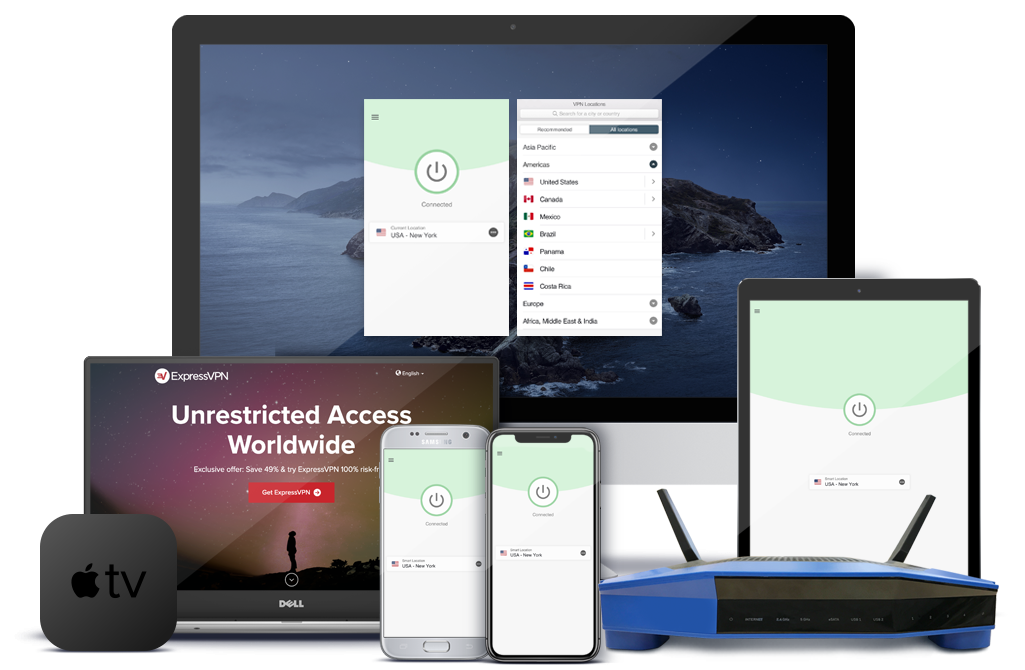Internet service providers or ISPs are the link between users and the internet. Being the middleman, ISPs determine a lot of the things a user can or cannot do on the internet. For example, a repressive government can order ISPs to block certain web content, effectively shutting off entire populations from accessing that information.
Apart from being able to control access to content, ISPs also determine how fast you can access the internet based on several factors.
One of the things users look out for when signing up for internet service is speed. The local ISP will let users know what kind of speeds are available on a certain subscription. Users are therefore able to choose a subscription and expect to get the indicated speeds at all times.
However, the advertised speeds are not always available to users and this may be attributed to the factors below:
- Poor infrastructure – some ISPs fail to develop their infrastructure in tandem with the growth in subscriber numbers. This leads to an overload of their systems which results in painfully low speeds.
- Damaged infrastructure – the ISPs depend on physical systems like undersea fiber cables which can be damaged by vandals, sea waves, ships or even natural disasters. When this happens, service may be interrupted or the speeds reduced due to limited bandwidth.
Apart from the two factors above, there is a third, hidden factor that may be affecting a user’s internet speeds. ISP throttling is a controversial issue that is of great concern to internet users.
What is ISP Throttling?
ISP throttling is the deliberate interference with your your broadband connection (internet speed) by your ISP. This affects the general performance of tasks that depend on the speed of your connection.
Sometimes it is difficult to identify ISP throttling because providers may claim that they are simply regulating internet data on specific activities to balance usage and ensure equitable access for all users.
This may happen when there is network congestion and the provider limits certain activities which are deemed to be heavy consumers of data.
Throttling vs. Capping
It is important to note the difference between throttling and capping. When you buy a subscription from your ISP, it may be provided in either of two forms:
- The ISP may offer users unlimited data at specific speeds. This type of subscription promises users a fixed internet speed without a limit on how much data is consumed.
- Users may also be offered a fixed amount of data for a period of time. For example, a user may subscribe to a plan that gives 20GB of data per month. When the data is exhausted the ISP may throttle the connection.
Signs of ISP Throttling
A throttled connection may exhibit any or a combination of the following:
- It takes long to download content
- A lot of buffering when streaming content such as Netflix or YouTube
- Extended lag when gaming
- Torrenting is slow
- Websites take long to load
When throttling is suspected, users can utilize various tools to determine if indeed their ISP is being unfair by deliberately limiting their internet speed.
Regular Speed Test
Users can conduct a regular speed test more often (maybe after a few days or weekly) and note any inconsistency in speeds at specific times. For example, low speeds at certain times of the day or month may be an indication of throttling.
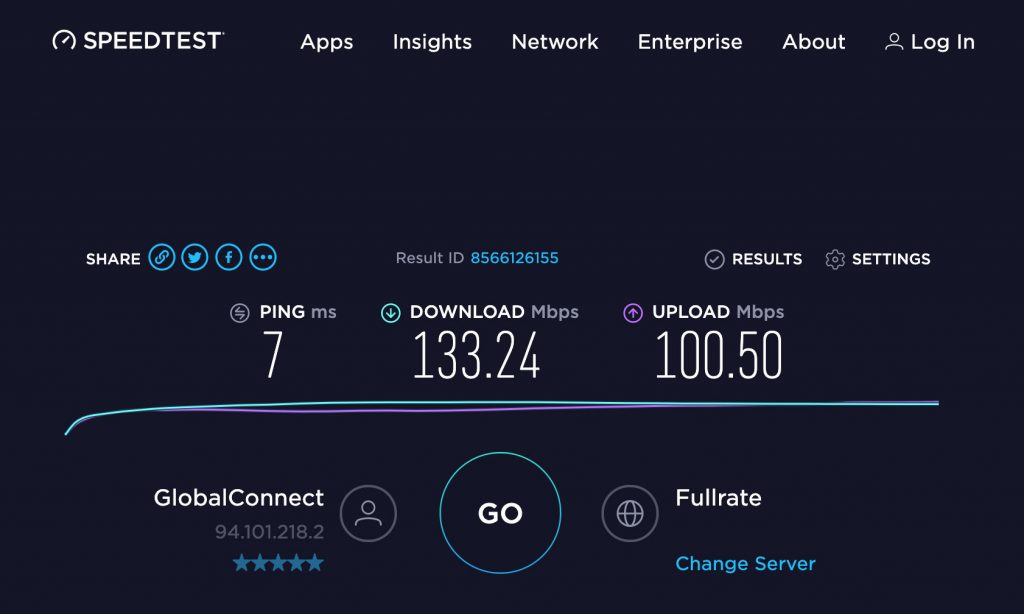
The speed of your current internet connection can be determined using some free tools at Speedtest.net or Testmy.net. This will give you a clear picture of what kind of speeds you are getting at different times.
Internet Health Test
Another way to find out whether your internet connection is being throttled is by using the Internet Health Test. This test looks at the speeds between your ISP and other transmission points on the internet and how it compares with the speed of your connection.
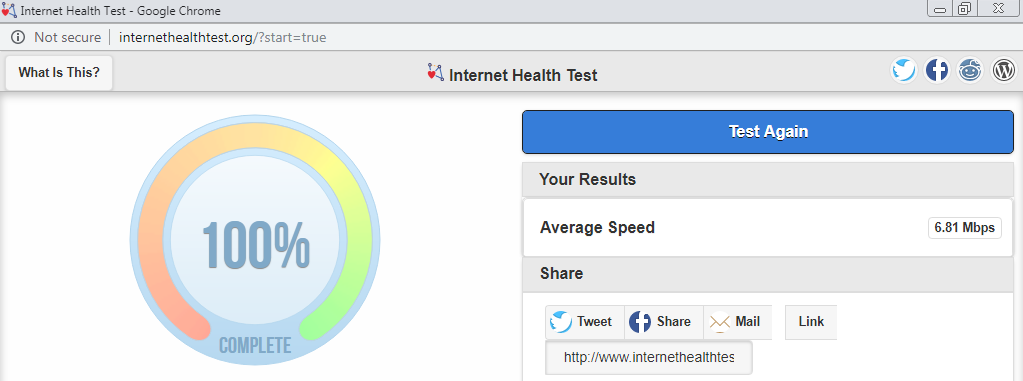
The test will detect any signs of throttling between your ISP and the transmission points by sending traffic from your device to certain points outside your ISP’s network.
The comparison in the performance of your broadband connection with other parts of the internet gives a clear picture of how far the connection is being throttled by the ISP.
Users can conduct a series of tests over a period of time to establish if there is a pattern of throttling from their ISP.
Why ISPs Throttle Traffic
Throttling of internet traffic is so widespread and has been the subject of legal proceedings across the United States and other jurisdictions. The net neutrality rules were supposed to provide a solution to this problem but their reversal in 2017 has given leeway for ISPs to determine how and what to block.
A recent pronouncement from a Federal Trade Commission official suggested that ISPs have the right to block certain applications as long as they disclose this to users. This suggests that blocking or throttling connections is not a violation of the law as long as it is disclosed.
However, recent moves by lawmakers in Congress may bring back net neutrality rules that will prevent ISPs from throttling connections for their own benefit.
Genuine Reasons for ISP Throttling
ISPs have valid reasons why they may want to throttle internet traffic. Some of the reasons are:
- To provide a stable internet service during peak times – When there is an overload of traffic, there is a probability of the whole system collapsing. To avoid this, the ISP can limit the bandwidth for heavy users.
- To enforce data transfer limits – ISPs can throttle a connection when the data limit has been exhausted as defined in the subscription plan.
- To prevent unfair use by a small group of users – in a situation where a group of users are taking up an unfair amount of data, the ISP may throttle their connection to provide other users with a fair share of the resources.
- To stop DDoS attacks – these attacks are executed through the taking over of multiple computing devices and using them to launch attacks. To stop such attacks, the ISP may throttle such a connection to safeguard the network.
- To prevent torrenting of copyrighted content – If an ISP has reason to believe that a user is torrenting copyrighted content, it can throttle the connection or even disconnect the user for infringement.
Hidden Reasons for Internet Throttling
Some ISPs may throttle your internet connection due to reasons that are no related to your activities but the inability to meet their obligations.
This can be attributed to the following:
Peering
The internet is made up of small networks that are linked to each other rather than one huge network. To operate optimally, these networks depend on each other. ISPs are the entities that own these networks and they create some form of relationship with each other.
In peering, the networks enter into an agreement to carry each other’s traffic at no cost. However, situations arise where one ISP exceeds the agreed traffic ratio which leads to the other network blocking access to their network.
This means that if you are a customer of the network that has exceeded the traffic ratio, your connection will be throttled to a bare minimum depending on the bandwidth available.
The arrangement may also take the form of a paid agreement where one network pays the other to carry its traffic. However, in a bid to save costs, some ISPs will throttle connections at the expense of their customers instead of buying more data.
Poor infrastructure
As ISPs advertise their services, their client base is bound to grow over time. This growth puts a strain on their resources. The right thing to do is to expand the network and upgrade their hardware and software.
Some ISPs tend to bring on board new clients but do not implement a commensurate upgrading of their systems. This leads to overloading of the network which results in poor service.
To mitigate this scenario, the ISP will resort to throttling in order to give every client some bandwidth and give a semblance of normalcy in their operations.
Where and when does ISP throttling happen?
ISP throttling is common in the following situations:
ISP Throttling at particular periods of the day or night
This happens when the network is congested at peak hours when majority of customers connect to the ISP at the same time. For example, during the early hours of the evening most people are at home and are likely to connect either to stream movies or play games. The system gets overloaded at this time, forcing the ISP to throttle connections to allow everyone some limited access.
This should not happen because the ISP should anticipate this and upgrade its equipment.
ISP Throttling for streaming and gaming services
Streaming services like YouTube, Netflix, Twitch and gaming portals like Steam are heavy consumers of bandwidth. ISPs may decide to target specific gaming and streaming networks for throttling or basically reduce the speed of anyone playing online games.
ISP Throttling for P2P
Peer to peer connections are used for downloading torrents. These are also data hungry services that tend to require unlimited bandwidth. ISPs are able to detect users who are torenting and throttle their connections.
How to Stop ISP Throttling
There are various ways of circumventing ISP throttling that can help users realize acceptable speeds on their internett connections. Let’s look at them:
Use of Proxy servers
Proxy servers are anonymous servers spread out around the world and they work by filtering your internet requests through web forms. The server acts as an intermediary for your requests, sending traffic on your behalf and enabling you to hide your identity and activities.
When choosing a proxy server, you need to find out whether it has acceptable speeds for processing your traffic.
There is a notable difference between a proxy server and a VPN. While both operate in a similar fashion, users have more control over a VPN than a proxy server – proxies are largely free resources.
Furthermore a proxy will handle traffic originating from the browser that is using the proxy site while a VPN will cover all internet traffic from your device.
There are two types of proxy servers users will encounter:
Web based proxies
Web-based proxies are the easiest to use because they are already configured. You simply go to the proxy website and use the connection anonymously.

Examples of web-based proxy servers include Hide My Ass!, Hidester, KProxy, ProxySite.com and Anonymouse.
Browser based proxies
Browser-based proxies can be used after your web browser has been configured with the address of the proxy servers. Identify the proxy server you want to use and note down the proxy server’s address and port number. Enter these details in the proxy configuration in your browser settings.
The use of proxies provides a convenient way to route internet traffic through an offsite server and conceal user activity from the ISP. All connections from your device will appear to utilize one unique port and to stream towards the same destination.
This routing of your web requests through a third party server, enables you to hide your activities and avoid throttling of your connection by the ISP.
Use a VPN
While a proxy server is a good way to be anonymous and hide your activities online, it may not have the strength to defeat all means of detection. To gain more leeway in the way you manage your internet traffic, a VPN may be your ultimate choice.
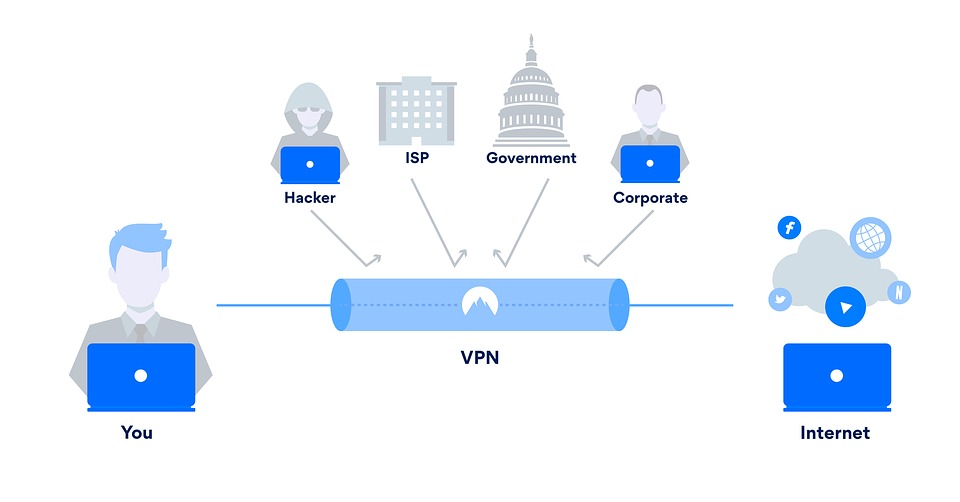
A VPN or virtual private network is a service that enables users to change their IP address and encrypt data such that they can send and receive information securely and remain anonymous at the same time.
The service simply tricks your device into thinking that it’s in another location by assigning it a different IP address. For example, when a VPN is installed, your device will appear to the rest of the internet to be in London when in actual fact you are in Los Angeles.
The Virtual Private Network server simply replaces your device’s initial IP address with a different one from any gateway city around the world. The number of gateway cities depends on how wide the provider has deployed servers around the world.
This connection method adds security and privacy by encrypting all the data that flows between your device and the rest of the internet.
A VPN service does the following:
- Hides your location
- Hides your IP address
- Encrypts data transfers
- Helps users to access blocked content
When data is encrypted, it essentially goes through a tunnel that is shielded from any prying eyes. This encrypted tunnel secures your data such that the ISP cannot figure out your online activities.
Using a VPN provides anonymity for users which prevents the ISP or anyone else from knowing what they are doing online. This enables users to maintain good speeds whether they are torrenting or streaming content.
The ISP may only be able to determine data consumption and destination VPN server but not what activities a user engages in or websites visited. This makes it difficult for an ISP to throttle your connection based on your online activities.
For a VPN service to help users who want to avoid ISP throttling achieve their objective, several characteristics are critical. Since all VPNs are not created equal, some may not be suitable for certain activities such as torrenting.
Let’s look at the main components of a VPN that will help users avoid ISP throttling:
- No logs policy
A good virtual private network must strictly enforce a zero logging policy. This means that the service should not keep any records of your online activities. These include which websites are visited, which files are downloaded, your real IP address or any connection timestamps.
VPN providers who keep such logs are likely to sell that data to third-parties or may inadvertently reveal it, exposing user activity.
Choosing a VPN service with a no logs policy minimizes the possibility of your ISP linking a particular browsing session to your IP address. This keeps you off the radar hence protecting your connection from any targeted throttling.
- Large pool of servers in multiple locations
ISP throttling affects the speed of an internet connection. When choosing a VPN, it is important to ensure that it doesn’t adversely affect your speed, defeating the purpose of installing one.
Choose a VPN service that has a large number of servers spread out evenly across the world. Fewer servers are likely to get overloaded by users and those that are far away will not help with speed.
Ensure the provider has servers close to you and a large selection to choose from.
- P2P Support
Peer to peer (P2P) capability is a prerequisite for any VPN being considered for downloading torrents. Not all VPNs allow unlimited bandwidth for torrenting purposes. It is therefore important to find a service that allows P2P traffic on their network.
If your internet connection is being throttled because of torrenting, you may want to be sure that your investment in a VPN brings value and does not make your situation worse.
- Presence of a Kill Switch
Your connection to the VPN server can sometimes drop due to various factors. When this happens, your internet connection is exposed, allowing the ISP to see all your activities.
A good VPN must have a Kill switch which prevents such a mishap from happening. A kill switch monitors the encrypted tunnel and switches off all internet traffic the moment a connection to the VPN server is lost.
Internet traffic will be restored only when a secure connection is established with the VPN server. This prevents the ISP from targeting your connection for throttling based on your activities.
- Use of strong encryption protocols
VPNs use a variety of protocols for their encryption standards. Some protocols are stronger than others and this plays a crucial role in how safe your data is as it travels through the tunnel.
A strong protocol will prevent the ISP from inspecting your connection to find out what you are upto and using that as a basis to throttle your connection.
OpenVPN and L2TP/IPsec are some of the strongest protocols in use today. They utilize highly secure encryption that is used by top government and military operations. Select a VPN service that takes security seriously and does not take chances that may expose you to your ISP.
- Great customer support
A VPN service that can help you evade ISP throttling should have a strong and available support team. This will help you navigate and troubleshoot in a timely manner. For example, not all available servers may be good for torrenting and customer support may be able to advise the choice of specific servers that are optimized for that purpose.
- Speed
ISP throttling is all about speeds. A good VPN will ensure that you enjoy the best speeds for any activity including downloading heavy files, gaming and for streaming content. The leading providers will provide unlimited bandwidth or / and allow simultaneous device connections that enable you to plug the service on desktop computers, tablets, TV, gaming consoles and smartphones.
- Multi Platform compatibility
Select a VPN that can be used across platforms running different operating systems. Most VPN providers offer apps for Windows, Android, iOS, MacOS and even Linux.
- Provider’s Operational Jurisdiction
As discussed above, a no logs policy is an important component of the service charter of any serious VPN provider. To protect user privacy, the laws of the country in which the provider is domiciled may help if they are friendly. Such countries do not require providers to keep user data, which ensures that such companies are protected by law with no obligation to share such information.
Advantages of using a VPN
- A VPN masks your traffic to look like a single stream to your ISP. this enables you to evade speed throttling by the ISP based on your activity.
- The use of a VPN can be implemented across devices and platforms. Most VPNs provide apps for almost every platform.
- The top VPN services offer ways to access streaming services like Netflix, Hulu, HBO and BBC iPlayer in restricted regions.
Some of the leading VPN services that can stop ISP throttling include ExpressVPN, NordVPN, CyberGhost, Surfshark and many others.
How to bypass ISP Throttling Without a VPN
If for any reason you are unable to use a VPN to circumvent ISP throttling, you may try a different approach which can alleviate the problem although not as well as a VPN.
On Windows
If you are running Windows on your computer, a few steps can help you deal with ISP throttling.
For Windows 10
- Click on the start menu and choose Run on the search bar options.
- Type MSC in the popup window and press “enter.” In Windows 7, simply type “Gpedit.msc” in the search bar on the start menu and press “enter” to open the “Local Group Policy Editor” window.
- In the “Local Group Policy Editor” window open Computer Configuration> Administrative Templates> Network> QoS Packet Scheduler> Limit reservable bandwidth
- In the new “Limit reservable bandwidth” window, choose the “Enabled” radio button.
- On the dropdown arrow choose or type 0
- Click on “Apply” and then “OK.”
- Close the window
- Under “Options” click on “Bandwidth limit (%)”
- Go back to the start menu and open Control Panel
- Click on Network and Internet > Network and Sharing Center > Change Adapter settings (found on the left side of the window)
- Left click on the “Local Area Connection,” scroll to the bottom and select “Properties”
- Under “Networking” ensure the “Internet Protocol Version 4 (TCP/IPv4)” box is checked.
- Click OK
- Go back to “Change Adapter settings” and double-click on the active network.
- Click on Properties
- Under “Networking” select “Internet Protocol Version 4 (TCP/IPv4) by clicking on it.
- Click on Properties
- Choose the Use the following DNS server addresses radio button at the bottom of the Internet Protocol Properties window.
- Enter the Google Preferred DNS server and the Secondary DNS Server as follows
Preferred DNS server: 8.8.8.8
Alternate DNS server: 8.8.4.4
- Tap or click OK.
- Close all the Control Panel windows that are open.
- The DNS server changes will take effect immediately.
It is important to verify that the new DNS servers your Windows platform is using are working properly. Visit several websites using any browser and see whether they are working fine and loading quickly. If so then the DNS servers you entered are working properly.
Metered connection on Windows 10
In this section we look at how a metered connection in Windows 10 affects your download speeds and how you can tweak the settings to ensure that you enjoy the speeds you deserve for your internet connection.
Windows 10 is a unique operating system that is designed for PCs that have unlimited internet connections. This OS uses a big chunk of your download and upload bandwidth without your knowledge.
When a user sets the connection as metered, it is possible to control what the bandwidth is used for (prevent Windows from taking up bandwidth unnecessarily) and therefore manage data caps on any network – dial-up connections, mobile hotspots, wired Ethernet or satellite Internet connections.
Setting your connection as metered prevents Windows from automatically using bandwidth in several ways:
- It disables automatic downloading of most Windows updates – You’ll get a “Download” button whenever updates are available. You can click on it whenever you are ready to install updates. However, on the Creators Update, Microsoft has given Windows Update permission to download critical security updates even if your connection is set to metered.
- It disables automatic downloading of app updates – metered connections prevent the Windows Store from automatically downloading updates for installed “Store apps.” However, desktop apps such as Chrome and Firefox will continue updating themselves.
- It disables peer-to-peer uploading of Windows updates – Windows 10 will stop using your upload bandwidth to share updates with other PCs over the Internet connection. Windows 10 has been setup to do this by default, which consumes your bandwidth instead of that of Microsoft.
- It stops updating of live tiles on your Start menu.
A metered connection is important in the following scenarios:
- Internet connections with bandwidth caps
If an Internet service provider has put in place bandwidth caps, whether on a monthly basis or at certain hours of the day, a metered connection on Windows will help increase your speeds.
- Slow Internet connections
A metered connection will increase your speeds on a slow network (for example a dial-up Internet connection) by preventing Windows from hogging the connection by downloading updates while you’re busy with other things.
A metered connection on Windows will help you free up bandwidth and increase your speeds when your ISP is throttling your connection.
You can change your Windows settings by following the simple process below:
- Open ‘’Settings’’ and Click on ‘’Network and Internet.’’
- Click on Wi-Fi / Ethernet and select your current network.
- Open Network options and enable ‘’Metered Connection.’’
- Return to the previous Setting menu and Select ‘’Update and Security.’’
- Now Select Window Update & Settings > Advanced Options > Delivery Optimization.
- Click on ‘’Advanced Settings’’ and then adjust the tab bar to optimize the computing bandwidth.
Important note: when using a metered connection on Windows 10, other apps like a BitTorrent client may read this setting and behave differently by stopping automatic downloads.
On Android
The Android OS is a popular mobile platform used by majority of people around the world. For users who depend on their wireless providers to access the internet on their Android devices, following a few easy steps can help manage ISP throttling:
- Open Settings on your Android phone or tablet.
- Select the Wireless and Networks option.
- Choose Mobile (Cellular) Networks menu and open Access Point Names.
- Select your Cellular provider
- Under Edit access point, click on APN type and add ‘’Dun’’ at the end.
- Reboot your phone to save new settings.
This will help you enjoy enhanced speeds and avoid ISP throttling.
On iOS
The best way to stop ISP throttling on iOS is by using a VPN. Most VPN providers offer apps that run on the iOS platform, making it easy to setup and avoid ISP throttling.
How to Bypass ISP Throttling While Torrenting
Peer to peer (P2P) traffic, which is used for torrenting is always a major target for internet throttling by ISPs. This is due to the association of P2P traffic with piracy.
Most ISPs will deliberately target torrenting users and throttle their bandwidth to avail it to other users.
Torrenting involves transferring data between seeds and peers. This mechanism requires a lot of bandwidth, giving ISPs a reason to throttle P2P traffic. This may happen at certain times of day when traffic is huge and the ISP needs to reduce the load on their network. However, this may also happen on a more permanent basis.
It’s important to note that torrenting can be used for downloading and distributing legitimate files.
Such moves to throttle connections will obviously frustrate users trying to download content through torrents. As mentioned, the best way to evade the throttling of internet traffic while torrenting is to use a VPN.
It is important to choose a VPN that supports a P2P network to enable torrenting because some VPNs do not support this activity.
If you are unable to use a VPN, there are other ways you can employ to evade throttling. The trick is to fool your ISP such that it sees the torrent packets as a single stream of traffic.
If you are downloading via P2P on a very well seeded torrent, then your speed should be close to the maximum speed your connection can handle on normal occasions. However, if you notice that your speed rarely goes beyond a few Kbps, then your internet service is likely being throttled.
To bypass this problem without using a VPN and still maintain fairly reasonable speeds, requires a service that will download the torrent for you and then allow you to download the file directly from it.
This means that the service handles the P2P traffic, hence what comes through your ISP is normal traffic which will not be throttled.
The following services (which are free to some extent) can download the torrents for you, then simply download the completed files in your browser at your normal speeds.
Bitport
Users can create a free Bitport account using Facebook or email. They can then paste a Magnet link and the file is transferred to the cloud storage. The service also allows users to browse for a torrent file from the PC by clicking on the “Upload torrent from PC” tab or simply drag and drop a torrent onto the window.
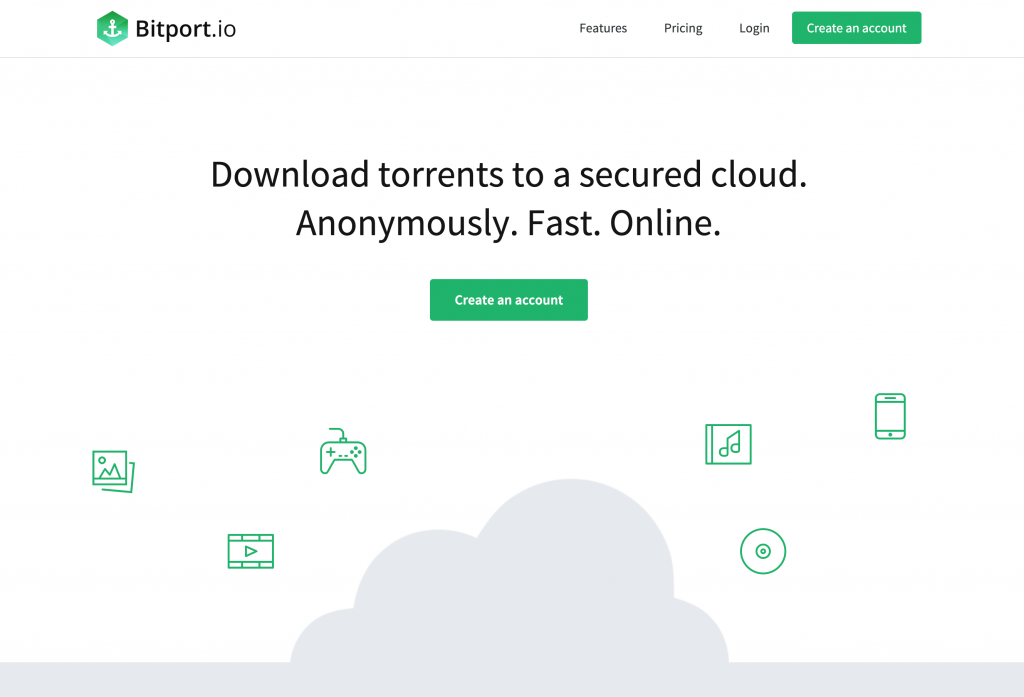
The torrent is then uploaded to the cloud storage where users can download individual files within, stream videos directly from the browser or view archives. Videos can also be streamed directly to desktop applications such as VLC. Users can also enjoy converting video files within a browser and play them even with subtitles.
Bitport’s free account offers 1GB of cloud storage space and restricts downloads to one torrent every 24 hours. The storage space may be little for those downloading heavy files but is reasonable for a free service.
The speeds for downloads on Bitport are excellent although they may vary depending on server loads or user location.
Seedr
Seedr is another service that allows you to download torrents in a super easy way. All you need to do is create an account using Facebook or your email. After creating the account, you simply paste a torrent or magnet link into the bar and add it to the download list. Users can also upload a torrent file from a PC by using the grey upload button.
Seedr allows you to download several files simultaneously by adding them to the wishlist. The wishlist can be accessed by clicking on the star icon. However, a limit of 1 torrent transfer at any one time is enforced.
The service offers 2GB of storage by default, which is substantive for a free service. The torrent file can therefore be as large as the total storage space allocated. However, users can increase their allocated storage by writing reviews on twitter or on blogs. Referrals can also earn users that all-important extra storage.
There is a Chrome extension for Seedr which is handy for quickly accessing downloads. The speeds on this service are excellent, enabling quick downloads without having to contend with ISP throttling.
FileStream
Another popular service for torrent downloads is FileStream. Users are required to create an account by using Google, Facebook, Microsoft or email.
This service offers a free plan and several paid plans which have extra features like increased storage and torrent sizes.
The free plan has basic features which include 1GB of storage space and a limit of 3 days for downloaded torrents to stay on FileStream servers.
After activating the account, users can paste a torrent or magnet link into the bar and hit the download button. The green upload button allows users to upload a torrent file from their computer.
When torrents files are uploaded from a local PC the service allows users to choose specific files they want to download from within the torrent. This is useful for users who do not want to download an entire torrent when they are only interested in a section of it.
The files can then be downloaded in the normal way through the browser as a Zip file. The service will prompt you to choose whether to download through a secure SSL or non SSL connection.
FileStream is a great service to download light torrents and the speeds are comparable to normal downloads which is great for users trying to avoid ISP throttling. .
Takeaways
ISP throttling is a common phenomenon across the world as a way of service providers saving money at the expense of users. ISPs deliberately engage in throttling user connections instead of upgrading their systems to cope with the growth in their subscriber base.
Biased legislation in favor of ISPs has not helped either. The only hope for internet users is that net neutrality rules can be revived to compel internet service providers to ensure everyone gets the connection speeds they deserve.
As we have seen, a little exploration will give you numerous options to stop ISP throttling. It is possible to use proxy servers, VPNs, tweaks on settings and other methods to stop your ISP from throttling your connection and frustrating your activities. Persistence in such behavior by your ISP can also be mitigated by changing your service provider.
Accessing content at acceptable speeds should be a right that should not be denied by ISPs.


